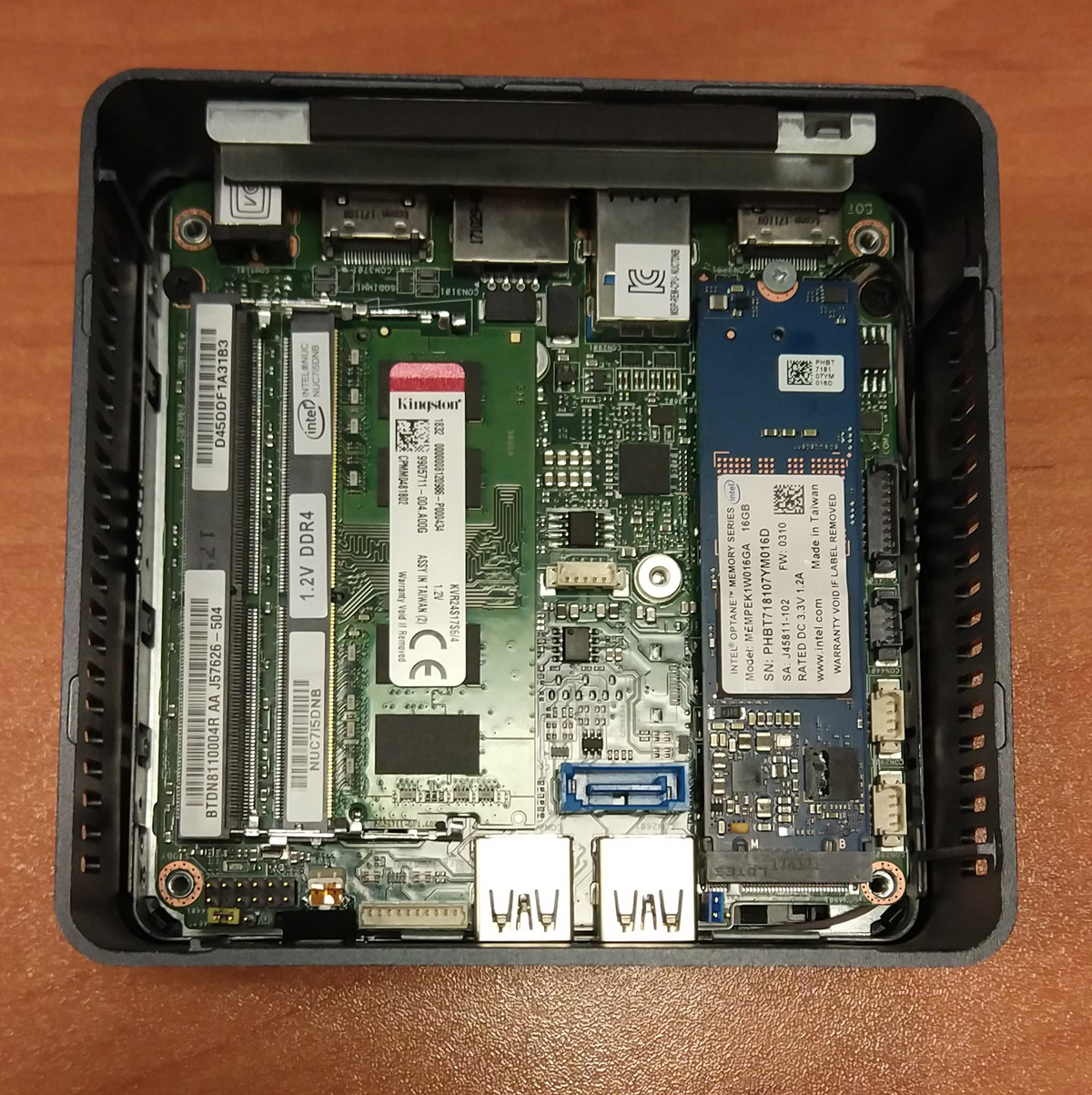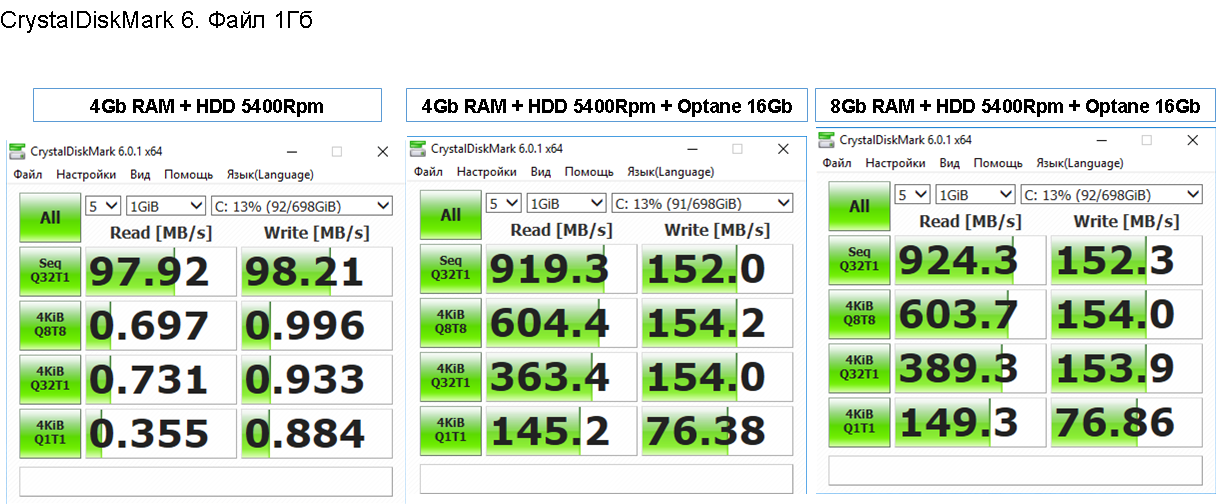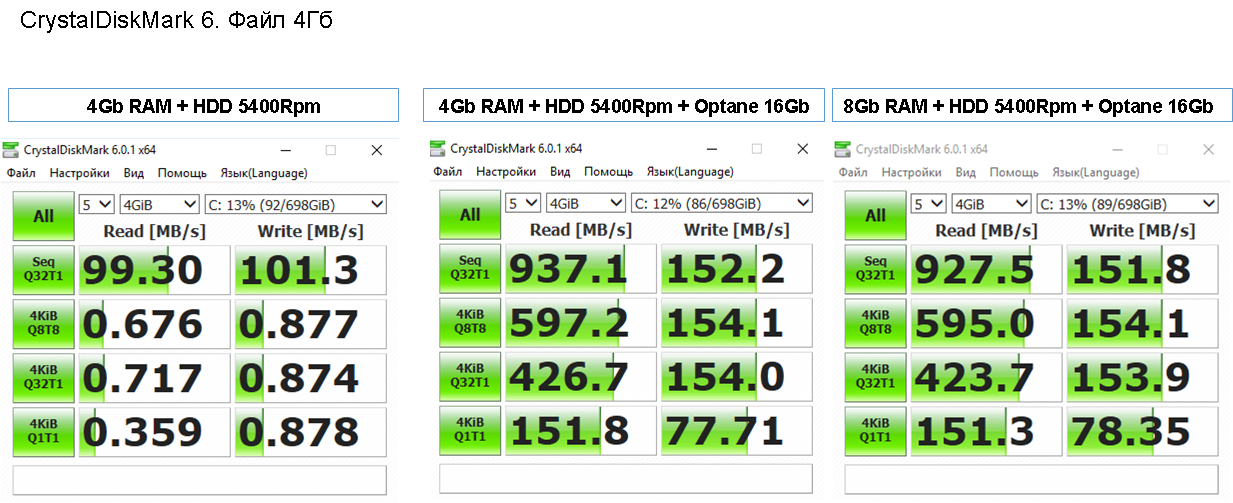Optane memory is a symbiote for HDD, and office PC configurations are 8–15% cheaper

You take a PC with HDD, stick an Intel Optane PCIe module inside, and it becomes a hard disk cache. It turns out much faster, because it is, in fact, a flash NVMe-module, which becomes part of the hard disk. You get a hybrid array. It is also relatively simple.
Such a request has fallen to us: will it be cheaper to buy office PCs with this board in comparison with an SSD disk? And what pitfalls are possible, if they are? And they are, of course.
We burned 32 GB of pay during the tests, so the numbers will be only about 16 GB.
How to put
Looking for Win 10 x64, motherboard with MiniPCIe and BIOS / UEFI-enabled Intel Optane. That is, this card does not work to speed up really old office computers (which would be much more fun in terms of modernizing the park), but you can buy new ones cheaper.
The warranty on the module from Intel - five years, which is equal to the life of the computer or even slightly exceeds it. The module can then be transferred to a new configuration or used as a very fast SSD disk with a large rewriting resource.
After installing the module, you need to switch the integration of PCIe with the chipset into the BIOS in order for the data to come directly. Then install drivers in the OS that will connect the PCIe module to the hard drive.
The whole procedure takes about 15 minutes.
What then?
The module ceases to be visible to the system as a separate device. All read / write operations on the selected hard disk go through it. The OS believes that it writes on the HDD, the entire management on Opteine.
After that, the driver will take the boot area and the file allocation table from the hard drive “to itself”, then drag the important parts of the OS onto the flash cards. Then start caching what you use most often. In our environment, these were the latest documents and executable modules of the office suite (and the rest of the application software).
The module itself decides what to carry on its memory and what to download to the HDD. He does it all the time.
When writing a file, everything is written to the module, and then the module gradually transfers it to the hard disk (and silently, from the point of view of the system, everything was recorded almost immediately). If you turn off the power at this moment, then there will be nothing terrible: the memory is non-volatile, so the data will simply remain on the board. Then the next time you turn on the cache it will be scattered where necessary.
The ambush is that after the board clings to the HDD, they cannot simply be picked up and unhooked. If it is broken, then the data will be corrupted. Intel says that they do not transfer data from boot areas, but clone them, but in fact synchronization is not instantaneous there.
To break the connection, it is necessary in the driver software to click on the unload button: for about 10 minutes, the software will do the reverse operation of transferring everything to the spindle disk, and then allow the board to be removed.
Tests
We checked the module not in the server environment, but on a regular Win-machine in the user environment with antivirus, office suite, Skype in autoload and other environments. Plus there were synthetic tests.
At first, we just take the files and write – read. Not the numbers themselves are important, but their approximate ratios, since the tests are comparative:



And here we stop falling into the cache size:

After working with large files, OS pieces are downloaded from the board to the spindle, so the next load can be long.
Now we compare the subjective parameters:

Summary
The configuration with 4 GB of memory can be used without problems. For example, with a 4 GB computer + 500 GB HDD + Optane, working as comfortably as on a similar configuration with 8 GB.
On a PC, this is simply a significant acceleration of disk operations. Here is a comparison:


The first option is to compare the cost of configurations of 4 GB + 500 GB HDD + Optane and 8 GB + SSD 256 GB.
The second is a comparison of the cost of 4 GB configurations + 500 GB HDD + Optane and 8 GB + 256 GB SSD + 256 GB SSD, i.e. with equal disk volumes (500 GB and 512 GB).
If we compare directly SSD home PC and Optane, then Optain of the same size is more expensive. But the SSD disk is needed much larger: it is not so tenacious (Optein's technology allows you to perform almost an order of magnitude more write cycles), there is a problem with the fact that it can end (and here everything is automatically downloaded to the spindle, that is, to NVMe - only hot data).
The second use of the boards is like a small, fast, bootable SSD disk that will have a large rewrite reserve.
Links
- The cheapest for today motherboard for Opteyna
- My mail is ANikulin@croc.ru
